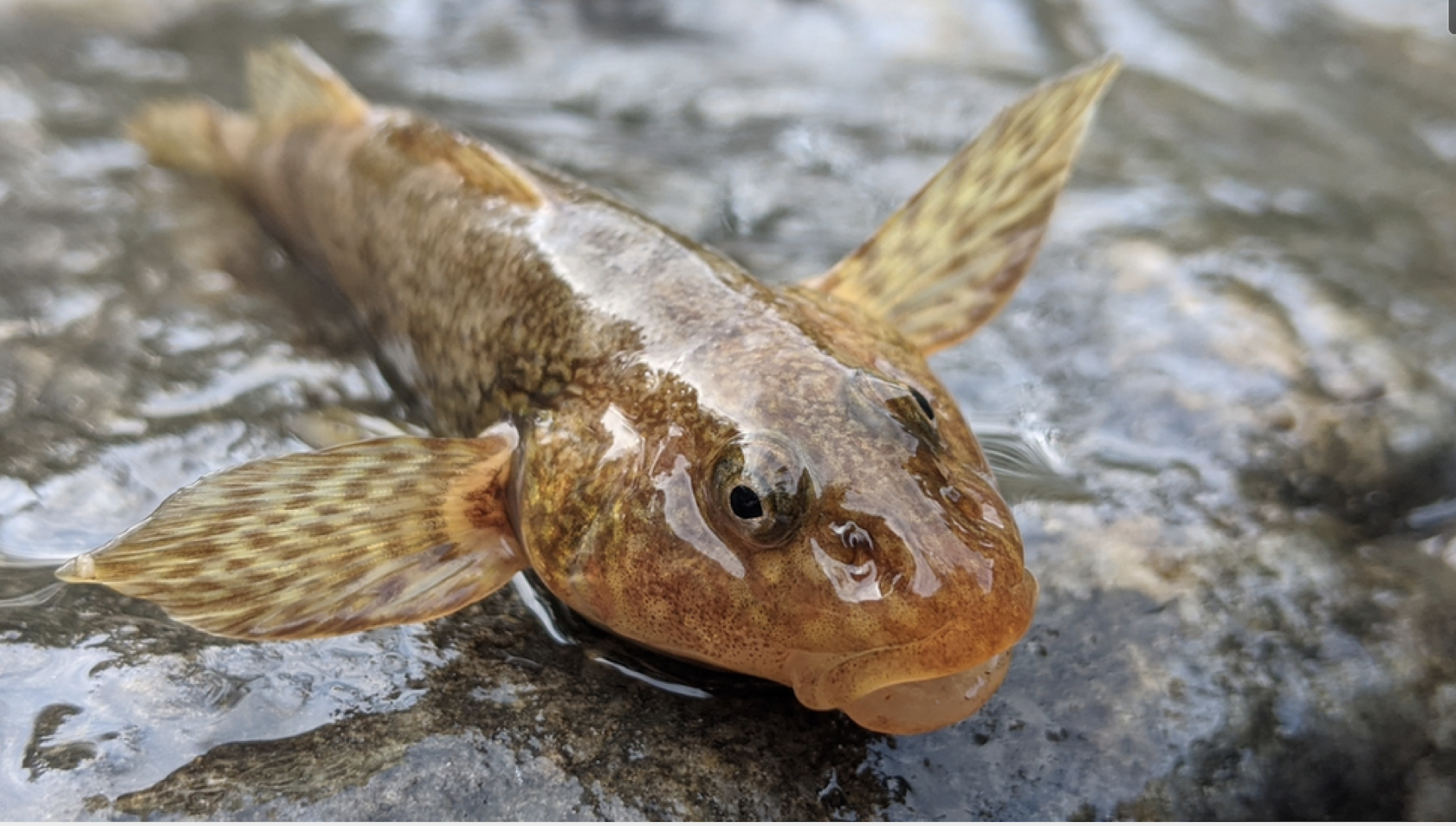On a tiny stretch of the fast-flowing Valsan river in Romania lives one of the rarest fish in Europe, and quite possibly the world.
The 65-million-year-old Asprete was first discovered by a biology student in 1956, and for decades it has teetered on the brink of extinction.
“After many years trying to save [it], people were telling us that the species was extinct,” Nicolae Craciun, a 59-year-old biologist, told the BBC. “But we were sure they still existed.”
The Asprete, a small nocturnal fish that hides under rocks, has an uncertain future and faces myriad threats.
Official estimates number the population at around 10-15 specimens, which are thought to exist on a 1km (0.6 mile) stretch of the shallow, rocky Valsan. This compares with around 200 specimens in the early 2000s.
But a small team of scientists and conservationists are campaigning to save the endemic fish species, also known as Romanichthys valsanicola.
And they have been encouraged by a recent discovery in the river.
‘One of the biggest rewards’
One day in late October, Andrei Togor, a 31-year-old fish biologist, was monitoring angling fish species of the Asprete when he discovered 12 specimens in a small section of the Valsan river.
“Having an Asprete in front of our eyes was fantastic,” he told the BBC. “It’s one of the biggest rewards a field biologist can get.”
The Asprete is a so-called living fossil, which means it has survived for millions of years largely unchanged. But a mere six decades of human activity has severely impacted its habitat and population.
Funding crisis threatens zoos’ conservation work
‘Urgent change’ needed to save nature
One of the major impacts on the species has been a series of hydroelectric dams, built on the mountainous river network under Romania’s communist regime in the late 1960s.
Until then, the Asprete is thought to have inhabited around 30km of the Valsan as well as two parallel rivers: the Arges and Raul Doamnei.
“It disappeared from the Raul Doamnei because there was no water any more. For one year the riverbed was almost dry,” says Andrei Togor. “The communist plan didn’t care about this endemic species. This fish is so rare because of humans.”
During the spring, prominent mountain climber and conservationist Alex Gavan decided to use his public profile to raise awareness of the Asprete, which means “the rough” in Romanian.
“I spent my childhood on the Valsan,” he says. “The legends about the fish then were like myths, people wondered whether they were still in the river.”
Together with biologist Nicolae Craciun and several others, he drafted an action plan to save the prehistoric fish.
“It was done with volunteers and our own money,” he says. “To save this species would be an inspiration that not all is lost.”
On a bright morning in early November, mountain rescue worker Adrian Dascalescu stands on a mountain road adjacent to a large hydroelectric dam. He remembers the dams being built.
“I saw that water was missing on the Valsan, half of what it was before,” he says. “I used to see the fish and then it became less visible.”
As we venture along the bumpy mountain road we pass several logging sites. Deforestation is just one of many additional pressures on the river that threaten the survival of the living fossil fish.
Murdered for trying to save Europe’s oldest forests
Other threats include river fragmentation, habitat degradation, illegal waste disposal, and the theft of riverbed gravel and large stones. “Many people take rocks and sand from the river to use in construction,” he explains, as the river gushes through the rich alpine landscape.
The Asprete is included on the critically endangered species list of the Berne Convention of European Wildlife and Natural Habitats.
Its environment is protected by law as an EU Natura 2000 site and as part of the Valsan Valley Nature Reserve.
But campaigners complain that rules are still ignored.
An official 2016 plan by Romania’s environment ministry, seen by the BBC, appears to back up arguments from campaigners that Hidroelectrica, the state-owned company that manages the dams, is failing to observe regulations on how much water it should release downstream.
Even by the state’s own admission, this threatens the Asprete.
“The flow of the river decreases to zero, immediately downstream of [the dam]. In the summer season, the decrease in downstream accumulation flow is sometimes extremely severe,” the document states.
Another document by the National Agency for Environmental Protection states: “For the Asprete, the most important species of fish in the area, the main danger is the non-compliance with the easement flow from the Valsan dam.”
“It’s unacceptable and me and my team are here to change that,” says Alex Gavan.
The BBC has approached Hidroelectrica for comment but has not received an official response. Off the record, they insisted they listened to the environmental protection agency and respected all Romania’s rules.
The action plan to save the Asprete also includes ecological restoration of the Valsan river basin, an around-the-clock warden, raising local awareness — and, ultimately, a riverside conservation centre that will double up as a captive breeding facility.
“Having some Asprete in captivity could be a back-up, should a catastrophe occur on the river,” says Nicolae Craciun, adding that they could potentially repopulate the Arges and Raul Doamnei rivers.
Alex Gavan says the action plan will require millions of euros in funding, and he sees it as significant as it will be signed by ministerial order. “It will be the roadmap to save the Asprete.”
As with all conservation projects where humans lay waste to the wilderness, it is a race against time.
However, the recent discovery of 12 Asprete has raised hopes that the population is more abundant than official estimates suggest.
“The Asprete is a living fossil, they need to be protected with the utmost importance by scientists and conservationists,” says Mr Craciun. “They are witnesses of evolution.”
And for Andrei Togor, the survival of the fish is “a barometer to the health of our planet.”
“It was here 65 million years ago. People cannot just destroy it in 50 years — it’s not right,” he says.




